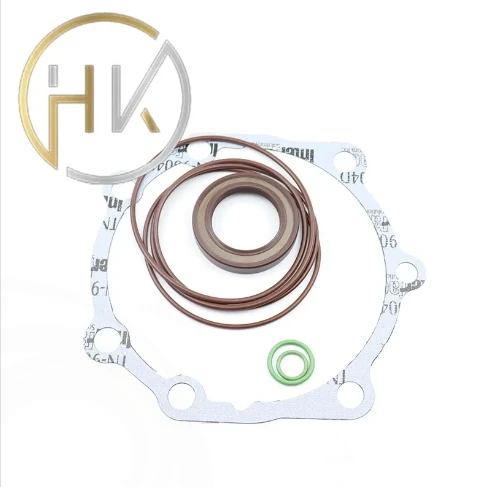Дек . 16, 2024 08:38 Back to list
hydraulic cylinder seal replacement
The Essential Guide to Hydraulic Cylinder Seal Replacement
Hydraulic cylinders are integral components in many machinery and equipment, providing the necessary force for various applications. However, like any mechanical system, they are susceptible to wear and tear. One of the most common issues encountered in hydraulic systems is the failure of seals. When it comes to maintenance, hydraulic cylinder seal replacement becomes not just an option but a necessity to ensure optimal performance and longevity of the equipment.
Understanding Hydraulic Cylinder Seals
Seals in hydraulic cylinders serve a critical function. They prevent hydraulic fluid from leaking out and maintain the pressure required for the efficient operation of the machinery. Typically made from materials like nitrile rubber, polyurethane, or fluorocarbon, these seals are designed to withstand high pressures and varying temperatures. However, factors such as contamination, poor lubrication, and improper installation can lead to seal degradation, resulting in leaks and impaired functionality.
Signs That Indicate Seal Replacement
Recognizing the symptoms of seal failure early can save you time and significant repair costs. Common indicators include
1. Fluid Leaks If you notice hydraulic fluid accumulating around the cylinder, it’s a clear sign that the seals might be worn out. 2. Decreased Performance A drop in the efficiency of the hydraulic system, such as slow actuation or loss of power, usually points to seal issues. 3. Increased Noise Unusual sounds like grinding or hissing during operation could indicate that the seals are failing and allowing air to enter the system.
The Replacement Process
Replacing hydraulic cylinder seals may seem daunting, but with the right tools and knowledge, it can be done effectively. Here’s a step-by-step guide to help you through the process
1. Preparation Before beginning, ensure you have all necessary tools, including wrenches, a seal removal tool, and replacement seals. Safety gear, such as gloves and goggles, is also essential.
hydraulic cylinder seal replacement

2. Disassemble the Cylinder Carefully disconnect the hydraulic lines and remove the cylinder from the equipment. Use a wrench to detach the end caps and slide the rod out.
3. Remove Old Seals Use a seal removal tool to carefully take out the old seals. Take care not to damage the cylinder surfaces during this step.
4. Clean the Cylinder Thoroughly clean the cylinder and the rod to remove any dirt or debris. This is crucial, as any contamination can cause premature seal failure.
5. Install New Seals Lubricate the new seals with hydraulic fluid and gently place them into the grooves of the cylinder. Ensure they are seated properly and free of twists.
6. Reassemble the Cylinder Carefully slide the rod back into the cylinder, reattach the end caps, and tighten them securely.
7. Testing After reinstallation, reconnect the hydraulic lines and test the cylinder under load to ensure the seals are functioning correctly and there are no leaks.
Maintenance Tips
To prolong the life of your hydraulic seals, regular maintenance is key. Regularly inspect your equipment for leaks, maintain clean hydraulic fluid, and ensure there is no contamination. Additionally, always follow the manufacturer's guidelines regarding maintenance schedules and operational practices.
Conclusion
Hydraulic cylinder seal replacement is an essential task for maintaining the efficiency and reliability of hydraulic machinery. By recognizing the signs of seal failure, following a structured replacement process, and carrying out regular maintenance, you can ensure your hydraulic systems continue to operate at peak performance. Understanding these fundamentals not only saves costs but also minimizes downtime and enhances productivity in industrial operations. Remember, a well-maintained hydraulic system leads to a more efficient and effective work environment.
-
TCN Oil Seal Metal Ring Reinforcement for Heavy Machinery
NewsJul.25,2025
-
Rotary Lip Seal Spring-Loaded Design for High-Speed Applications
NewsJul.25,2025
-
Hydraulic Cylinder Seals Polyurethane Material for High-Impact Jobs
NewsJul.25,2025
-
High Pressure Oil Seal Polyurethane Coating Wear Resistance
NewsJul.25,2025
-
Dust Proof Seal Double Lip Design for Construction Equipment
NewsJul.25,2025
-
Hub Seal Polyurethane Wear Resistance in Agricultural Vehicles
NewsJul.25,2025
-
The Trans-formative Journey of Wheel Hub Oil Seals
NewsJun.06,2025
Products categories
















